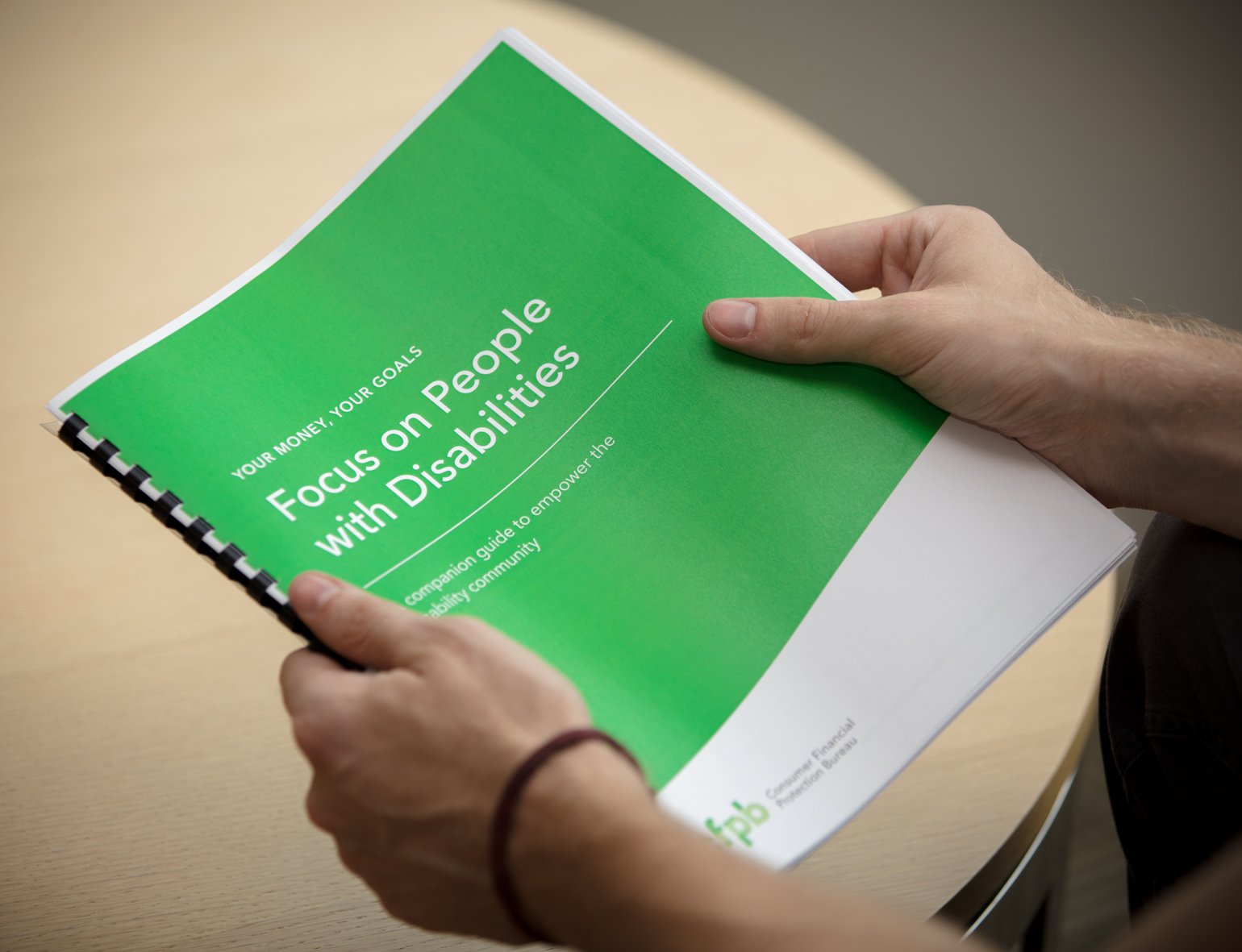New financial empowerment tools for people with disabilities

This year marks the 27th anniversary of the Americans with Disabilities Act . This is a time for us to celebrate the leaders in the disability rights movement past and present who have worked tirelessly to ensure equality of opportunity, independent living, and economic self-sufficiency for all people. Despite much progress, millions of people with disabilities continue to face significant obstacles as they go about their lives, including full participation in the mainstream financial marketplace.
We’re excited to announce the release of Focus on People with Disabilities . This is a companion guide to our Your Money, Your Goals financial empowerment toolkit that’s based on the idea that everyone has a right to control their own money and make their own financial decisions. Your Money, Your Goals consists of a set of modules that organizations may integrate into their daily work with the people they serve.
We want every person to have the chance to participate in the financial marketplace. The disability community proudly affirms “nothing about us, without us,” and we take that advice to heart. For this reason, our guide contains information, tips, tools, and skill-building resources based on insights from people with disabilities and from organizations that serve the disability community. The Your Money, Your Goals: Focus on People with Disabilities guide includes information on how to:
- Identify financial abuse and exploitation. Individuals may be reluctant to say anything about abuse and exploitation that is happening to them. People often don’t speak up due to embarrassment, shame, or fear.
- Set up an Achieving a Better Life Experience (ABLE) Account and build savings. For many people with disabilities, saving may not seem possible. This may be because some benefit programs have asset limits caps. These limits cap the amount of money people can save to maintain eligibility for that type of assistance. However, there is a new savings option for some people with disabilities that does not count against these asset limits.
- Pay for assistive technology. Assistive devices can help some people with disabilities achieve independence so they can reach their goals.
- Understand how income from work impacts Supplemental Security Income (SSI) benefits. Some people think that getting paid at a job will stop their SSI check, but that’s not necessarily true. In fact, the more you work, the more you make overall, even on SSI.
We created eleven new tools that are fully dynamic and accessible along with a guide to help organizations, their staff, and volunteers implement the toolkit and training. This specialized information equips staff and volunteers to adapt trainings, provide accommodations, and use the toolkit and other resources to meet the needs of people with disabilities.
